Do you have a question about the Siemens SINUMERIK 802D and is the answer not in the manual?
Identifies and explains the various operator control and LED elements on the CNC operator panel.
Details the function of each key on the vertical CNC keyboard layout.
Explains the function of each key on the physical machine control panel.
Defines machine, workpiece, and relative coordinate systems used in programming.
Describes the division of the HMI screen into status, application, and note/softkey areas.
Explains the common softkeys used across different screens, like Back, Abort, OK.
Lists and describes the different operating areas (POSITION, PROGRAM, SYSTEM, etc.) available in the control system.
Details how to access and use the integrated online help system for functions and commands.
Outlines the procedure for powering on the CNC and machine, and performing the reference point approach.
Explains how to store and manage tool parameters and offsets in the OFFSET PARAM area.
Guides through the process of defining new tools, including geometry and technological data.
Describes how to determine and register the positions of dressers using the HMI.
Explains the procedure for detecting and setting workpiece positions relative to machine axes.
Introduces manual operation modes supported by JOG and MDA.
Details the operation of the JOG mode for manual axis movement and parameter display.
Explains how to create or execute part programs using manual data input (MDA).
Describes the functions and menu structure available in automatic operation mode.
Guides on selecting and initiating the execution of a part program via the Program Manager.
Explains how to search for specific blocks within a part program for editing or execution.
Provides an overview of the PROGRAM MANAGER area for managing part programs.
Details the steps for creating new part programs and directories.
Explains how to modify existing part programs, including saving changes.
Outlines the functions for parameterizing and analyzing NCK, PLC, and drives.
Explains how to view and modify machine data which influences machine behavior.
Covers functions for displaying information about axes, drives, and network settings.
Details functions for diagnostics and commissioning of the PLC.
Introduces technology subroutines (cycles) for machining processes like grinding and dressing.
Explains how cycles are defined as subroutines with parameter lists and their call conditions.
Discusses hardware requirements and call/return conditions specific to grinding cycles.
Provides detailed programming parameters and sequence for taper grinding using CYCLE405.
Covers basic concepts of NC programming including program names, structure, and word format.
Explains commands for programming dimensions, including absolute, incremental, and radius/diameter modes.
Details linear and circular interpolation, fixed point, and reference point approaches.
Covers programming spindle speed, positioning, gear stages, and the use of a second spindle.
Explains functions like constant cutting rate, rounding, and chamfering.
Describes tool selection, offset numbers, and radius compensation (G41, G42).
Explains the use of M functions for controlling operations like coolant and spindle.
Details the use of H functions for transferring floating-point data to the PLC.
Covers arithmetic parameters (R), local user data (LUD), and reading/writing PLC variables.
Explains unconditional and conditional program jumps using labels and IF instructions.
Describes how to use subroutines and call machining cycles within programs.
Explains system variables for monitoring runtime and counting workpieces.
Covers the function and programming of inclined axes using TRAANG, G05, and G07.
Details how to program different feedrates, dwell times, and retraction within a single block.
Explains how to activate and control oscillating axis movements with reversal points.
Lists requirements for network communication, including RCS802 tool and interfaces.
Introduces the RCS802 tool for PG/PC communication and its functions with/without a license.
Describes possible network connections and protocols for SINUMERIK 802D sl.
Guides on setting up network parameters like IP address and subnet mask.
Explains how to create and manage user accounts for personal settings and remote access.
Details the process of transferring data like part programs using the RS232 interface.
Explains how to create, read, and write start-up archives to CF cards or USB drives.
Describes the procedure for transferring PLC projects between the control system and external storage.
Explains how to copy and paste files and directories between different locations using softkey functions.
Describes the screen layout and key elements for PLC diagnostics.
Details hotkeys and softkey functions available for PLC program navigation and monitoring.
Provides a practical example of using various cycles for a specific workpiece machining task.
Presents a second practical example demonstrating cycle usage for workpiece machining.
Lists and describes user-defined parameters used internally by grinding cycles.
Provides detailed tables of parameters related to tool data for grinding and dressing.
Includes miscellaneous functions like the pocket calculator and character editing.
Provides contact information for submitting comments and suggestions for document improvement.
Offers an overview of the SINUMERIK 802D sl documentation structure.
Identifies and explains the various operator control and LED elements on the CNC operator panel.
Details the function of each key on the vertical CNC keyboard layout.
Explains the function of each key on the physical machine control panel.
Defines machine, workpiece, and relative coordinate systems used in programming.
Describes the division of the HMI screen into status, application, and note/softkey areas.
Explains the common softkeys used across different screens, like Back, Abort, OK.
Lists and describes the different operating areas (POSITION, PROGRAM, SYSTEM, etc.) available in the control system.
Details how to access and use the integrated online help system for functions and commands.
Outlines the procedure for powering on the CNC and machine, and performing the reference point approach.
Explains how to store and manage tool parameters and offsets in the OFFSET PARAM area.
Guides through the process of defining new tools, including geometry and technological data.
Describes how to determine and register the positions of dressers using the HMI.
Explains the procedure for detecting and setting workpiece positions relative to machine axes.
Introduces manual operation modes supported by JOG and MDA.
Details the operation of the JOG mode for manual axis movement and parameter display.
Explains how to create or execute part programs using manual data input (MDA).
Describes the functions and menu structure available in automatic operation mode.
Guides on selecting and initiating the execution of a part program via the Program Manager.
Explains how to search for specific blocks within a part program for editing or execution.
Provides an overview of the PROGRAM MANAGER area for managing part programs.
Details the steps for creating new part programs and directories.
Explains how to modify existing part programs, including saving changes.
Outlines the functions for parameterizing and analyzing NCK, PLC, and drives.
Explains how to view and modify machine data which influences machine behavior.
Covers functions for displaying information about axes, drives, and network settings.
Details functions for diagnostics and commissioning of the PLC.
Introduces technology subroutines (cycles) for machining processes like grinding and dressing.
Explains how cycles are defined as subroutines with parameter lists and their call conditions.
Discusses hardware requirements and call/return conditions specific to grinding cycles.
Provides detailed programming parameters and sequence for taper grinding using CYCLE405.
Covers basic concepts of NC programming including program names, structure, and word format.
Explains commands for programming dimensions, including absolute, incremental, and radius/diameter modes.
Details linear and circular interpolation, fixed point, and reference point approaches.
Covers programming spindle speed, positioning, gear stages, and the use of a second spindle.
Explains functions like constant cutting rate, rounding, and chamfering.
Describes tool selection, offset numbers, and radius compensation (G41, G42).
Explains the use of M functions for controlling operations like coolant and spindle.
Details the use of H functions for transferring floating-point data to the PLC.
Covers arithmetic parameters (R), local user data (LUD), and reading/writing PLC variables.
Explains unconditional and conditional program jumps using labels and IF instructions.
Describes how to use subroutines and call machining cycles within programs.
Explains system variables for monitoring runtime and counting workpieces.
Covers the function and programming of inclined axes using TRAANG, G05, and G07.
Details how to program different feedrates, dwell times, and retraction within a single block.
Explains how to activate and control oscillating axis movements with reversal points.
Lists requirements for network communication, including RCS802 tool and interfaces.
Introduces the RCS802 tool for PG/PC communication and its functions with/without a license.
Describes possible network connections and protocols for SINUMERIK 802D sl.
Guides on setting up network parameters like IP address and subnet mask.
Explains how to create and manage user accounts for personal settings and remote access.
Details the process of transferring data like part programs using the RS232 interface.
Explains how to create, read, and write start-up archives to CF cards or USB drives.
Describes the procedure for transferring PLC projects between the control system and external storage.
Explains how to copy and paste files and directories between different locations using softkey functions.
Describes the screen layout and key elements for PLC diagnostics.
Details hotkeys and softkey functions available for PLC program navigation and monitoring.
Provides a practical example of using various cycles for a specific workpiece machining task.
Presents a second practical example demonstrating cycle usage for workpiece machining.
Lists and describes user-defined parameters used internally by grinding cycles.
Provides detailed tables of parameters related to tool data for grinding and dressing.
Includes miscellaneous functions like the pocket calculator and character editing.
Provides contact information for submitting comments and suggestions for document improvement.
Offers an overview of the SINUMERIK 802D sl documentation structure.
| Brand | Siemens |
|---|---|
| Model | SINUMERIK 802D |
| Category | Control Unit |
| Language | English |
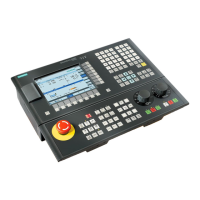
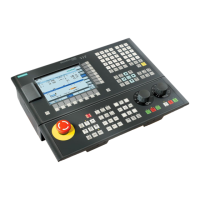
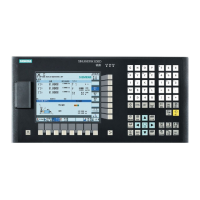
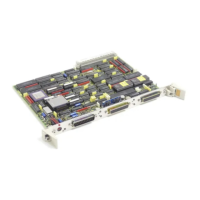
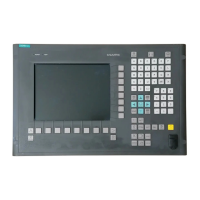
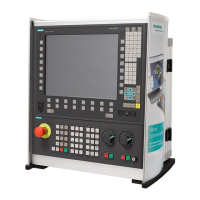
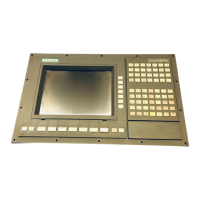
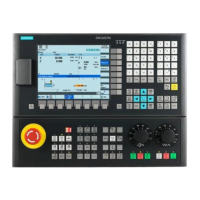
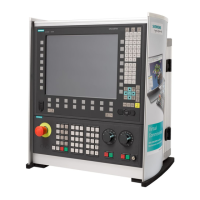
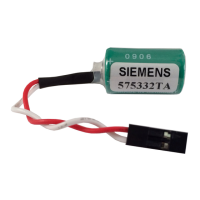
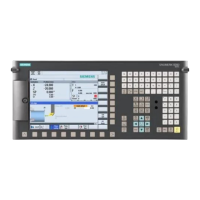
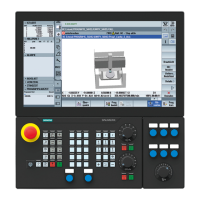
